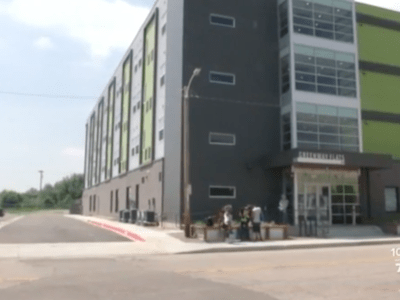Late last year, in recognition of the extreme difficulty of conducting overnight street counts in the midst of a still-raging global pandemic, HUD’s Office of Special Needs Assistance Programs (SNAPs) allowed communities across the country to request exemptions to the typically-inflexible requirement to conduct a biennial point-in-time (PIT) count of people experiencing unsheltered homelessness.
That’s welcome news, which speaks to a deeper and perhaps uncomfortable truth: Annual counts are no way to end homelessness.
Why? For the same reason that no doctor with a choice in the matter would treat a patient based on a single MRI taken six months prior to the patient arriving in their emergency room. At the individual level, homelessness is a dangerous, disorienting, and often lethal experience. At the community level, it’s the result of multi-system failure. And it can’t be tackled with data collected only once a year.
PIT counts, even at their best, do only as much as their name suggests: capture a snapshot of homelessness in a community at a single point in time. That snapshot can be illuminating, to be sure — but wicked problems like homelessness twist and change in the dark once the light fades. That’s why it’s so encouraging that in the same guidance that exempted communities from the unsheltered count, SNAPs also — for the first time — opened the door to community use of high-quality, real-time by-name lists in lieu of one-night counts.
For the 83 American communities participating in the Built for Zero initiative, the 82 which have already achieved quality, real-time by-name lists, and the 14 which have actually ended homelessness altogether for a target population — most recently Bakersfield, California — this change is nothing new. They understand that the first step towards ending homelessness for good anywhere is building a community-wide data system accountable to a community-level aim to end all forms of homelessness — and that that data system must allow movement leaders to know, in real time and by name, every single person experiencing homelessness in their communities.
For three years, I worked as part of the team of dedicated researchers responsible for collecting point-in-time data from communities around the country and reporting that data to Congress through the Annual Homelessness Assessment Report. I saw first-hand how much time and energy the point-in-time count and reporting process takes up for front-line service workers and regional administrators already stretched thin by decades of being asked to do more with less while a moral crisis grew in scope and horror in front of their eyes.

“Data is good, yes, but in the concrete, not the abstract; for what it helps us achieve, not merely for what it helps us describe.“
And for what? Data is good, yes, but in the concrete, not the abstract; for what it helps us achieve, not merely for what it helps us describe. Here‘s what I know: The 14 communities that have reached a measurable end to chronic or veteran homelessness through Built for Zero have done it by devoting their considerable talents and energies to building data systems sophisticated, robust, and concrete enough to help them test strategies and tactics in real time — and those strategies in turn have helped over 100,000 real people get into housing.
To be sure, this work isn’t happening only in Built for Zero communities. Many communities outside of Built for Zero are working hard to improve the quality and comprehensiveness of their data in HMIS and other real-time or near real-time data systems. I’m grateful to SNAPS for the consideration it has extended communities around the country still reeling from the effects of this pandemic, and to the wisdom it has shown by opening the door to an approach to ending homelessness that’s grounded in a methodology that we know works: an unshakeable commitment to a shared, measurable end state — zero homelessness — and an investment in the real-time data systems necessary to measure progress towards that goal.
Now, it’s time for the next step: To throw that door wide open and stand fully behind a coordinated, well-resourced federal approach to homelessness data that moves the field further away from an annual snapshot and enables every community in America to know everyone experiencing homelessness by name and in real time.
Each of us learned, early in life, that we have a responsibility to those around us: to our families, to our friends, to our neighbors, and to our communities. This terrible pandemic and our response to it have taught us that we can move mountains together if we try. For those of us in this work and for those experiencing homelessness today, the mountain ahead of us is clear. We can end homelessness — I know that because I’ve seen it happen — and therefore we should.







